29 May 2025
9 MIN READ
Top 10 Defining Moments from Jimmy Carter’s Presidency
Summary
Jimmy Carter, the 39th President of the United States, served during one of the most challenging periods in post-war American history. While often overshadowed by economic struggles and foreign crises, his administration featured moments of courage, idealism, and lasting global impact.
From granting amnesty to Vietnam draft dodgers to forging peace in the Middle East, Jimmy Carter’s history is a complex mix of moral ambition and political difficulty. And while his post-presidential life, primarily through the Jimmy Carter Presidential Library and Museum, has received more praise than his time in office, his leadership moments deserve a closer look.
1. Jimmy Carter's draft dodger amnesty and national healing
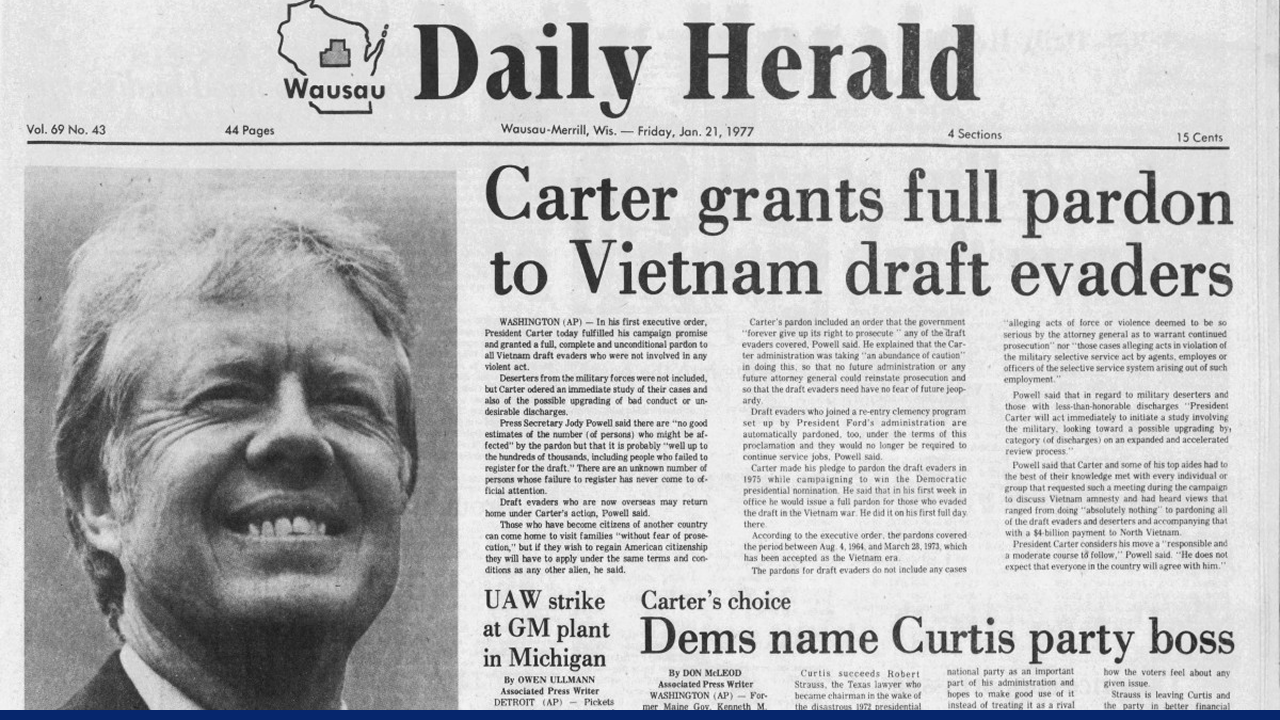
President Jimmy Carter on the front page of the Wausau Daily Herald after granting a full pardon to Vietnam War draft evaders in his first executive action on January 21, 1977. Source: Newspapers.com/Facebook
Healing post-Vietnam America
On his second day in office, President Jimmy Carter fulfilled a campaign promise that set the tone for his presidency. He issued a blanket pardon to Vietnam War draft dodgers. This act excluded violent offenders but applied to thousands of Americans who had fled conscription, many of whom had sought refuge in Canada.
A bold gesture of reconciliation
While controversial at the time, the decision reflected Carter’s moral compass and desire to reunify a divided nation. It also improved US-Canada relations and highlighted his commitment to principle over political popularity.
2. Jimmy Carter’s energy reform and the path to conservation
Responding to the energy crisis
In response to the ongoing energy crisis, Carter made energy reform a national priority. He signed the Emergency Natural Gas Act, pushed for deregulation of oil and gas prices, and emphasized conservation.
A defining chapter in Jimmy Carter history
Carter’s cardigan-clad televised addresses became iconic symbols of his message: use less, produce more, and prepare for the long haul. His efforts also led to the expansion of the Strategic Petroleum Reserve and the creation of a comprehensive energy strategy.
3. Jimmy Carter’s stand against Soviet communism
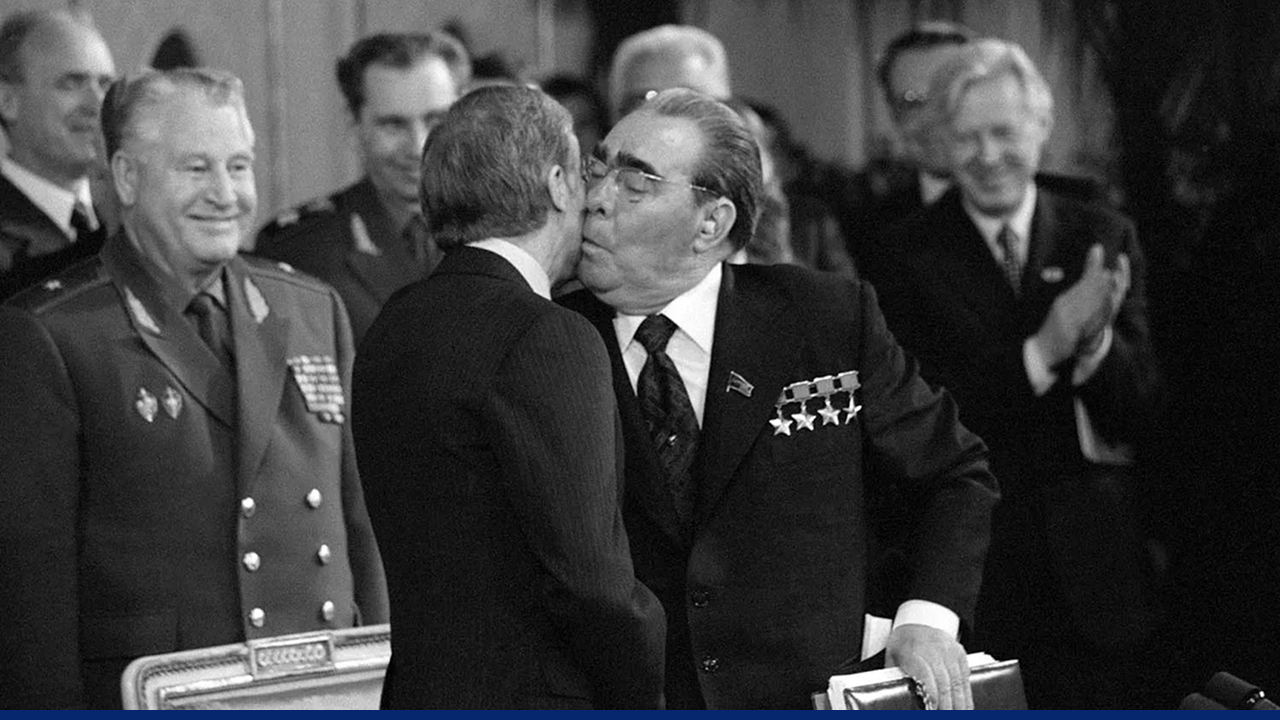
Soviet leader Leonid Brezhnev kisses Carter’s cheek after the signing of the second Strategic Arms Limitation Talks Treaty in Vienna in June 1979. Source: Universal History Archive/UIG via Getty images
The letter that echoed globally
During the Cold War, Carter chose a quiet but firm approach to human rights. He wrote a personal letter to Andrei Sakharov, a Soviet dissident and physicist, supporting his push for reform and human dignity.
How former President Jimmy Carter used quiet diplomacy
Publicized by Sakharov himself, the letter became a global signal of US opposition to Soviet repression without triggering open confrontation. It showed Carter’s preference for diplomacy rooted in moral clarity.
4. Jimmy Carter’s Iran visit and moral compromise
Praising the Shah, and paying the price
In 1977, Carter visited Tehran and praised the Shah’s regime as an “island of stability.” This was a sharp departure from his earlier human rights-centered rhetoric.
When Jimmy Carter history clashed with US values
The Shah’s regime was widely known for torture and oppression, carried out by the SAVAK secret police. Carter’s support, intended to secure US interests, backfired, fueling revolutionary anger and undermining his moral standing.
5. Jimmy Carter and the Camp David Accords
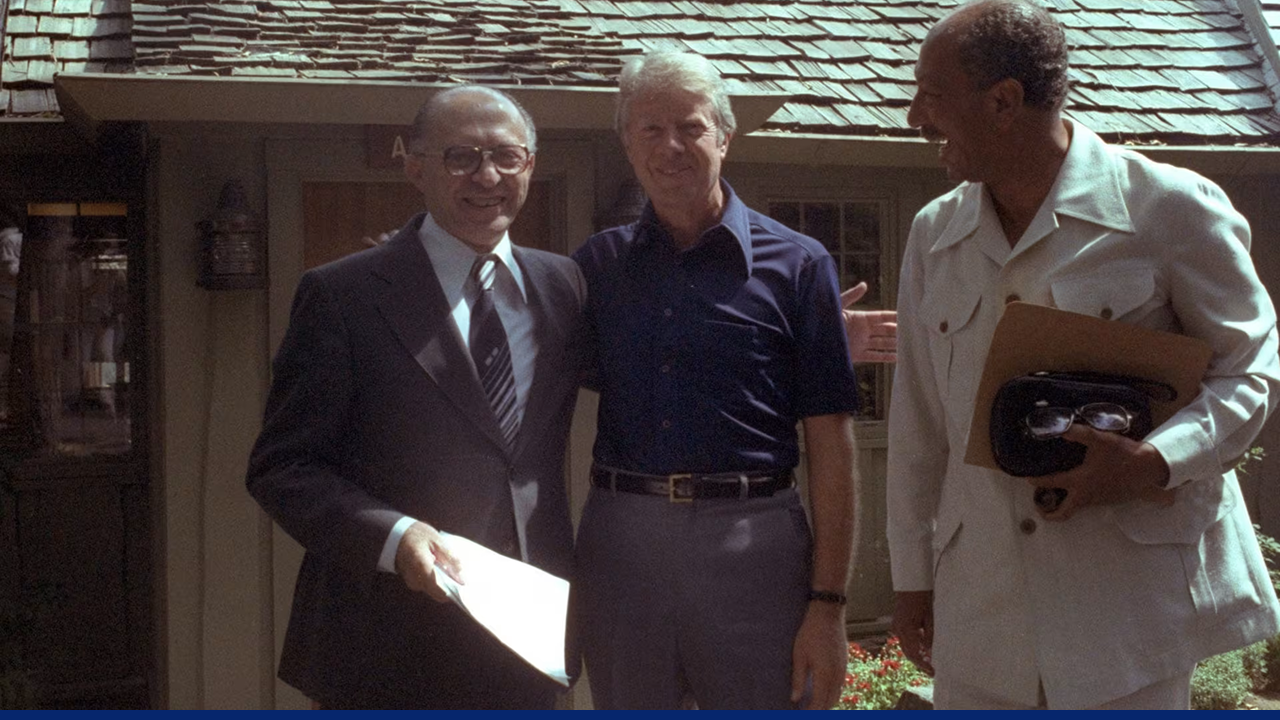
Israeli Prime Minister Menahem Begin with Egyptian President Anwar Sadat and President Jimmy Carter during their peace talks on September 6, 1978 at the presidential retreat of Camp David in Maryland. Source: Moshe Milner/GPO/Getty Images
13 days that changed the Middle East
In 1978, Carter brought together Egyptian President Anwar Sadat and Israeli Prime Minister Menachem Begin at Camp David. The talks were tense, with both sides unwilling to meet directly.
A moment that defines the Jimmy Carter Presidential Library and Museum
Carter’s breakthrough came through a personal gesture. He presented Begin with photos inscribed with his grandchildren’s names and a plea for peace. This emotional appeal helped lead to Egypt recognizing Israel and Israel agreeing to withdraw from the Sinai Peninsula.
6. The Iran hostage crisis and Jimmy Carter’s biggest test
A humanitarian move that backfired
In 1979, Carter allowed the Shah to enter the US for medical treatment. Soon after, Iranian students stormed the US Embassy in Tehran, taking 52 Americans hostage.
Former President Jimmy Carter’s crisis of endurance
The hostages were held for 444 days. A failed rescue mission, Operation Eagle Claw, ended in disaster. Though Carter worked tirelessly for a resolution, the crisis ultimately defined his presidency. The hostages were released just minutes after Reagan’s inauguration.
7. The Crisis of Confidence: Jimmy Carter’s misunderstood speech
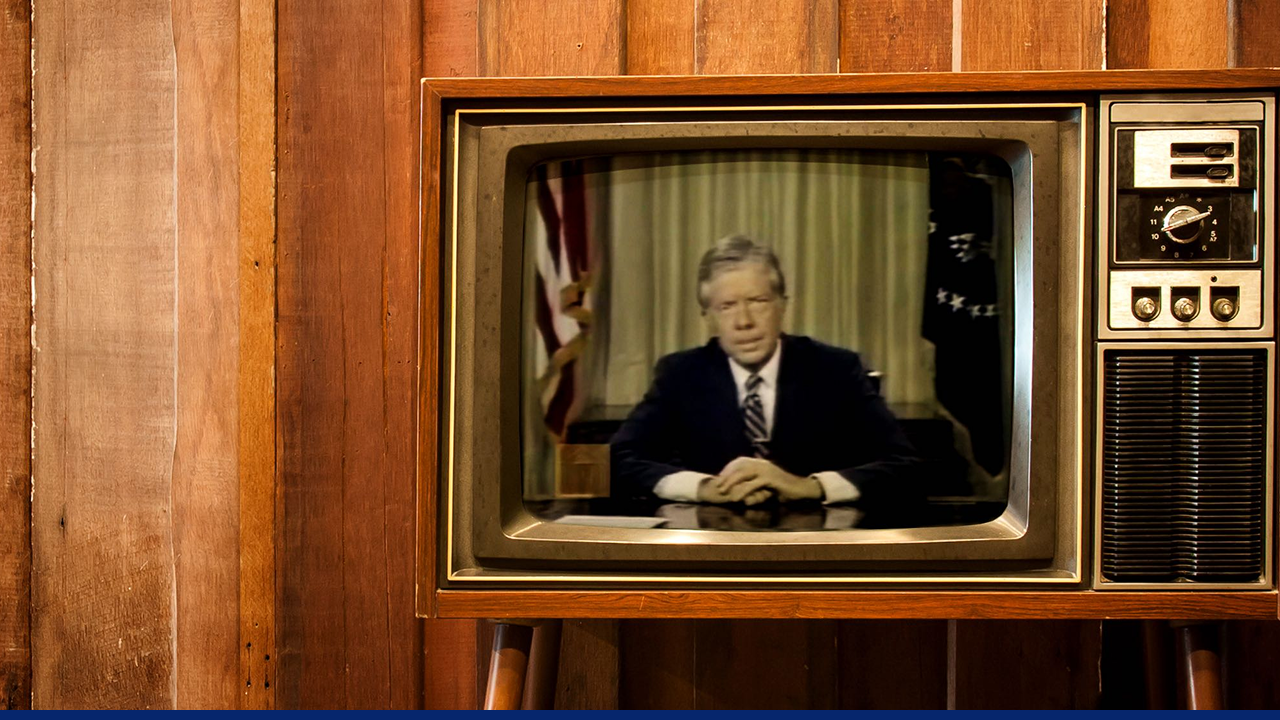
President Jimmy Carter delivers a nationally televised address from the Oval Office. Source: Simon Hertnon's Upstream Philosophy
A speech that shaped Jimmy Carter history
In July 1979, amid economic uncertainty, Carter delivered his now-infamous “Crisis of Confidence” speech. He called for energy conservation, taxing oil companies, and a shift in national values.
Mixed reactions, lasting impact
While initially well-received, the speech was later mocked as defeatist. Though Carter never used the word “malaise,” it stuck, and the speech became symbolic of his struggle to lead during turbulent times.
8. Jimmy Carter invokes Taft-Hartley during coal strike
Breaking a historic strike
In 1978, Carter invoked the Taft-Hartley Act to end a 91-day coal strike, forcing 160,000 miners back to work. His decision was aimed at protecting energy supplies during economic turmoil.
Fallout with labor
While effective in the short term, the move alienated labor unions. Many viewed it as a betrayal by a president who had campaigned on worker support, further straining his political base.
9. Jimmy Carter’s recognition of China over Taiwan
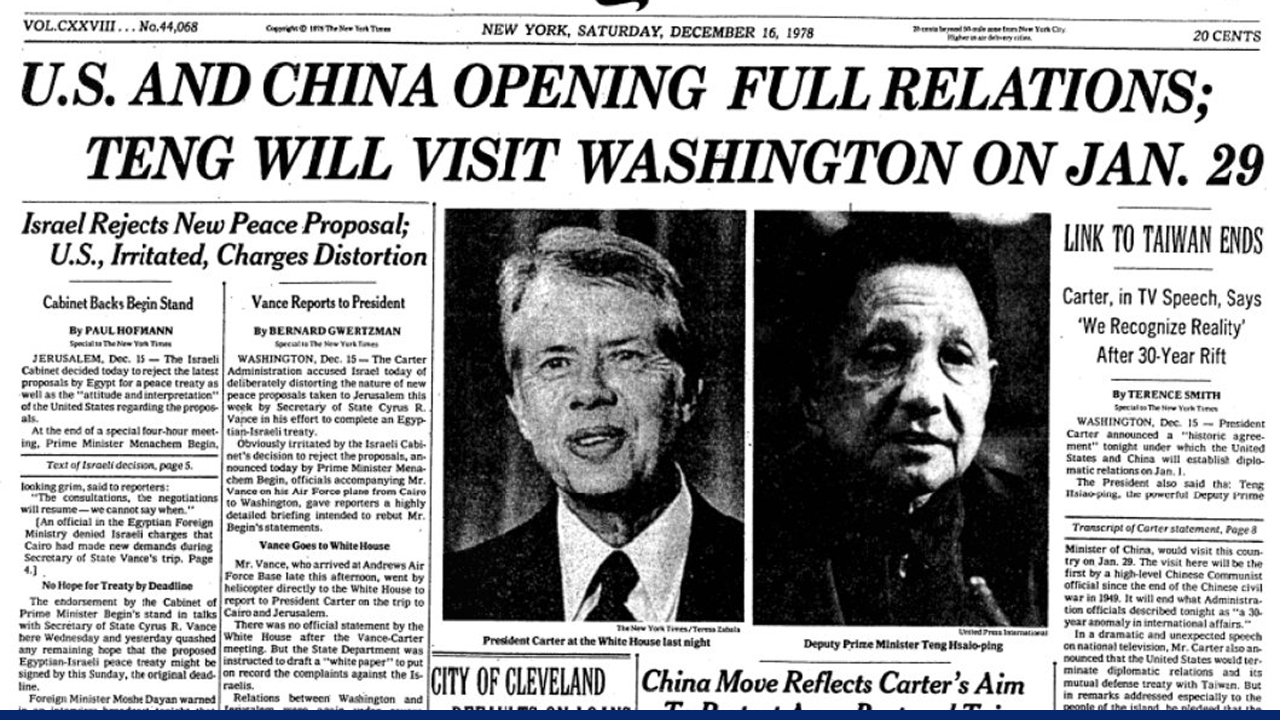
Front page of The New York Times from December 16, 1978, announcing the historic establishment of full diplomatic relations between the United States and China under President Jimmy Carter, marking a major shift in Cold War geopolitics. Source: Formosa Files
A geopolitical pivot by former President Jimmy Carter
On January 1, 1979, Carter officially recognized the People’s Republic of China, ending decades of diplomatic support for Taiwan. It was a Cold War move meant to counterbalance Soviet influence.
Strategic shift with lasting consequences
While the move boosted US-China relations and opened trade and educational exchanges, it also angered Taiwan and paved the way for China’s rise as a global power, something still debated today.
10. The Carter Doctrine and the Afghan dilemma
Responding to Soviet aggression
After the Soviet invasion of Afghanistan in 1979, Carter announced the Carter Doctrine: any Soviet attempt to control the Persian Gulf would be met with US resistance.
Jimmy Carter history and Cold War strategy
Carter backed the Mujahideen with covert support, aligned with China and Israel, and imposed sanctions on the USSR. While effective at the time, these decisions contributed to later instability in the region, including the rise of terrorist groups.
Conclusion - Reframing Jimmy Carter’s legacy
Jimmy Carter’s history as president is often remembered for crises and missed opportunities, but that only tells part of the story. He took bold moral stances, emphasized human rights, and made lasting contributions to energy policy and international peace. His efforts at Camp David, his pardon for draft evaders, and his post-presidency humanitarian work (honored through the Jimmy Carter Presidential Library and Museum) reveal a leader guided more by values than popularity.
In many ways, Carter was ahead of his time. Although political forces may have constrained his presidency, his post-presidency redefined what leadership looks like beyond the White House.
People also ask
What is Carter remembered for?
While Jimmy Carter’s presidency faced criticism, he is best remembered for his post-presidency humanitarian work. Through the Carter Center, he championed global health, democracy, and human rights. His role in the Camp David Accords, which focused on energy policy and moral leadership, also stood out. In 2002, he received the Nobel Peace Prize, cementing his legacy as a president who may have struggled politically but never wavered ethically.
How did Jimmy Carter lose his presidency?
Carter lost the 1980 election to Ronald Reagan, largely due to economic challenges like inflation and unemployment, and the prolonged Iranian hostage crisis. His perceived lack of decisiveness, combined with a growing sense of national malaise, made Reagan’s message of optimism more appealing. Despite early popularity, these crises overshadowed his achievements and contributed to a landslide defeat.
What religion was Jimmy Carter?
Jimmy Carter is a devout Southern Baptist. His faith shaped much of his worldview and leadership style. He taught Sunday school well into his 90s and often spoke about integrating moral principles into public service. His commitment to faith-driven values made him one of the most openly religious presidents in modern history.
What was Jimmy Carter being treated for?
In recent years, former President Jimmy Carter has faced multiple health challenges. He was treated for melanoma that had spread to his brain in 2015, underwent hip surgery, and experienced falls that required hospitalization. Despite these setbacks, he remained active in public life, often making appearances and statements from his home in Plains, Georgia.
Did Jimmy Carter have a wife?
Yes, Jimmy Carter was married to Rosalynn Carter for over 77 years until her passing in 2023. Their partnership was one of the longest in US presidential history. Rosalynn played a vital role in his campaigns and initiatives, focusing especially on mental health advocacy and humanitarian efforts during and after his presidency.
